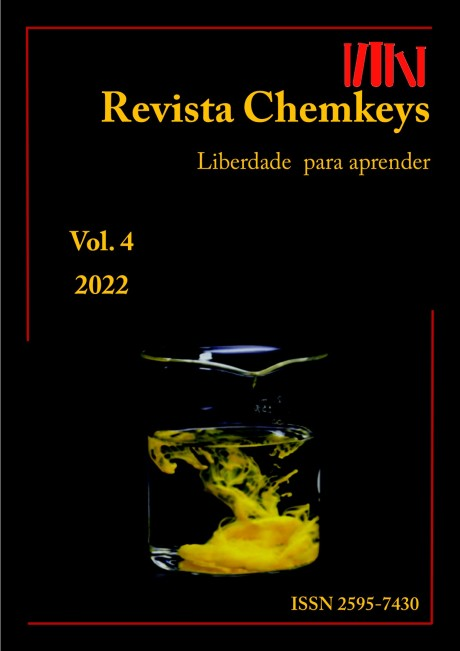Abstract
Conventional gravimetry (also known as precipitation gravimetry) consists of a sequence of operations that aims to precipitate (separate) the substance of interest (the analyte) in the form of a poorly soluble compound, with known and well-defined stoichiometry. After its separation and drying, the precipitate is weighed on an analytical balance and, from its mass and stoichiometry, the concentration of the original analyte is quantitatively determined. It is a method of analysis in which the measured signal is the mass or mass change, and its application requires only the use of base units of the International System of Units (SI), such as the mass or the mole. Among the advantages of using this technique are its good reproducibility, associated with the simplicity of operational execution and the use of equipment commonly used in the laboratory. On the other hand, its main disadvantages lie in its execution time, which is generally very long and in the lack of sensitivity of the method, which makes it impractical for the determination of microconstituents in the sample. Despite being subject to accumulative errors, caused by possible execution failures in the various steps, operations, and manipulations necessary for its execution, the results obtained with the use of gravimetric methods are quite accurate, limited only by the detection limit of the analytical balance used in the procedure. It is the oldest quantitative analysis technique, and although it is not currently the most important analytical method, it is still used in specialized applications and in process standardization.
References
(1) Andrade JC de. Química analítica básica: as reações de precipitação. Rev. Chemkeys [Internet], Campinas, SP, 2022, v4: e022001, 8 pp. Disponível em: https://econtents.bc.unicamp.br/inpec/index.php/chemkeys/article/view/16099
doi: 10.20396/chemkeys.v4i00.16099
(2) Gamsjäger H, Lorimer JW, Scharlin P., Shaw DG. Glossary of Terms Related to Solubility (IUPAC Recommendations 2008), Pure Appl. Chem., 2008, 80: 233–276.
doi:10.1351/pac2008800202333
(3) Widmer M. Gravimetry. Encyclopedia of Analytical Chemistry, Online, John Wiley & Sons, Ltd., 2006. Disponível em: https://onlinelibrary.wiley.com/doi/abs/10.1002/9780470027318.a8101m
doi: 10.1002/9780470027318.a8101m
(4) Vogel AI. Análise Química Quantitativa, ed.: Jeffery GH, Bassett J, Mendham J, Denney RC., Editora Guanabara Koogan, 5ª ed., Rio de Janeiro, RJ, 1992, p. 348.
(5) Skoog DA, Holler FJ, Nieman, TA. Princípios de Análise Instrumental, 5ª ed., Bookman Cia. Editora, Porto Alegre, RS, 2002, Cap.31.
(6) Harris DC. Análise Química Quantitativa, LTC - Livros Técnicos e Científicos Editora, S.A., Rio de Janeiro, RJ, 2008, p.695.
(7) von Weimarn PP. The Precipitation Laws, Chem Rev., 1926, 2: 217-242.
(8) Kahlwext, M. Ostwald ripening of precipitates, Advances in Colloid and Interface Science, 1975, 5: 1-35.
(9) Referência 4, p. 378.
(10) Jonte JH, Martin Jr DS. The solubility of silver chloride and the formation of complexes in chloride solution, J. Amer. Chem. Soc., 1952, 74: 2052-2054.
(11) Fritz JJ. Thermodynamic properties of chloro-complexes of silver chloride in aqueous solution, J. Solution Chem., 1985, 14: 865-879.
(12) Andrade JC de. Química analítica básica: equilíbrios iônicos em solução aquosa. Rev. Chemkeys [Internet], 2009, 9(3), 13 pp. Disponível em: https://econtents.bc.unicamp.br/inpec/index.php/chemkeys/article/view/9647
dõi: 10.20396/chemkeys.v1i0.9647
(13) Baccan N, de Andrade JC, Godinho OES, Barone JS. Química Analítica Quantitativa Elementar. 3. ed. revisada, 5ª reimpressão, São Paulo: Editora Edgard Blücher, 2008.
(14) Andrade JC de. Química analítica básica: os instrumentos básicos de laboratório. Rev. Chemkeys [Internet], 2011, 11, 14 pp. Disponível em: https://econtents.bc.unicamp.br/inpec/index.php/chemkeys/article/view/9832
20396/chemkeys.v0i7.9832
(15) Andrade JC de. Química analítica básica: Procedimentos básicos em laboratórios de análise. Rev. Chemkeys [Internet]. 2011, 7, 21pp. Disponível em: https://econtents.bc.unicamp.br/inpec/index.php/chemkeys/article/view/9831
20396/chemkeys.v0i7.9831
(16) Andrade JC de, Custódio R. Química analítica básica: O uso da balança analítica. Rev. Chemkeys [Internet].2000, 3, 3pp. Disponível em: https://econtents.bc.unicamp.br/inpec/index.php/chemkeys/article/view/9664
20396/chemkeys.v0i3.9664
Ramette RA. Realistic Introduction to Solution Equilibria, J. Chem. Educ., 1960, 37: 344-348.
Insley MJ, Parfitt GD, Smith AL. Association between silver and chloride ions in aqueous solution, J. Phys. Chem., 1964, 68: 2372-2374.
Shakhashiri BZ, Dirreen GE, Juergens F. Solubility and complex Ion equilibria of silver(l) species in aqueous solution. J. Chem. Educ., 1980, 57: 813-814.
Harris, TM. Revitalizing the gravimetric determination in quantitative analysis laboratory. J. Chem. Educ., 1995, 72: 355-356.
Kabalnov A. Ostwald ripening and related phenomena. J. Dispersion Science and Technology, 2001, 22: 1-12.
Gamsjäger H, Lorimer JW, Salomon M, Shaw DG, Tomkins RPT. The IUPAC-NIST Solubility Data Series: A guide to preparation and use of compilations and evaluations (IUPAC Technical Report). Pure Appl. Chem., 2010, 82: 1137–1159.

This work is licensed under a Creative Commons Attribution-NonCommercial-ShareAlike 4.0 International License.
Copyright (c) 2022 João Carlos de Andrade


